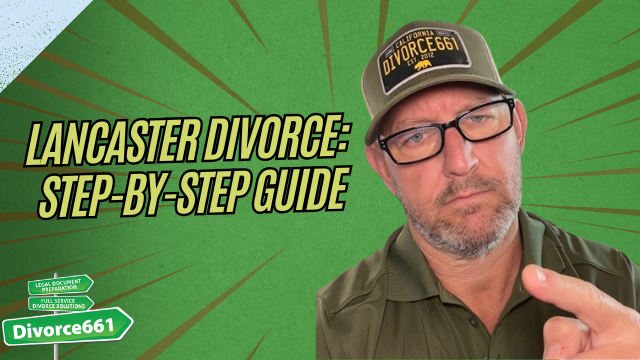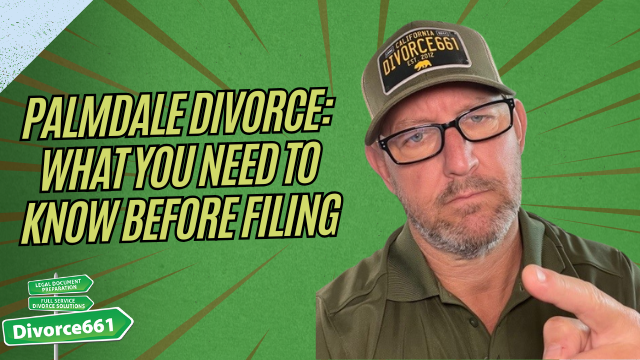Lancaster Divorce: Step-by-Step Guide
Filing for divorce in Lancaster is straightforward when you know the steps and what paperwork to prepare. This guide walks through the process used at the Antelope Valley Courthouse (Los Angeles County Superior Court) and explains what to expect from filing to final judgment. The goal is to help you move through each stage efficiently and avoid common delays.
Overview: The five core steps
The divorce process in Lancaster typically follows five main steps:
- Prepare and file the Petition and Summons with the Antelope Valley Courthouse.
- Serve your spouse (or obtain an acknowledgment of receipt if they cooperate).
- Complete and exchange financial disclosures, which are required in every California divorce.
- Draft and sign a settlement agreement addressing property, support, and custody.
- Submit the judgment package to the court for review and approval.
Step 1: File the Petition and Summons
Start by preparing the Petition for Dissolution and the Summons. These documents are filed with the Los Angeles County Superior Court at the Antelope Valley location for Lancaster residents. Make sure the forms are filled out accurately and that you keep copies for yourself.
Tip: Filing remotely or using a full-service provider can reduce mistakes and speed up the process if you prefer not to handle court filings yourself.
Step 2: Serve your spouse
After filing, the next step is to serve the other party with the Petition and Summons. There are two common paths:
- Formal personal service by a third party or process server.
- If your spouse is cooperative, they can sign an acknowledgment of receipt to avoid formal service.
Obtaining a signed acknowledgment speeds the process and reduces friction. Always file proof of service or the signed acknowledgment with the court to show the case was properly served.
Step 3: Exchange financial disclosures
California requires both parties to exchange financial disclosures in every divorce. These documents typically include:
- Income information (pay stubs, tax returns)
- A complete list of assets and debts
- An income and expense declaration, if required
Full and honest disclosure is mandatory. Exchanging these documents early helps identify issues, informs settlement negotiations, and prevents surprises down the road.
Step 4: Draft a settlement agreement
Once financial disclosures are exchanged, draft a settlement agreement that covers all major issues. Key topics to address include:
- Division of property and debts
- Spousal support, if applicable
- Child custody, visitation, and child support
- How and when assets will be transferred or sold
A well‑crafted agreement reduces the chance of court intervention and can allow the case to be finalized without court appearances. Make sure the agreement is signed by both parties and properly incorporated into the judgment package.
Step 5: Submit your judgment package
After the settlement is signed, prepare the judgment package for submission to the court. The package usually includes the marital settlement agreement and the proposed judgment and any required court forms. The court will review the materials and, if everything is in order, sign the judgment.
Important: California law imposes a minimum six-month waiting period from the date of service before a divorce can be finalized. Even with a signed settlement, you must wait out this statutory period before the judgment becomes final.
Timeline and common pitfalls to avoid
Timelines vary depending on how quickly documents are prepared, served, and exchanged, but an amicable, well-documented case can move through the court in a matter of weeks to months. Common mistakes that cause delays include:
- Incomplete or unsigned settlement agreements
- Missing or inaccurate financial disclosures
- Improper service or failure to file proof of service
- Filing at the wrong court location
- Forgetting required supporting forms in the judgment package
Double-check signatures, review disclosures thoroughly, and confirm filing requirements for the Antelope Valley Courthouse to reduce the chance of rejection or delay.
A real-world example
A Lancaster couple wanted a fast, clean resolution without court appearances. By preparing accurate paperwork, obtaining an acknowledgment of receipt from the other spouse, exchanging full financial disclosures, and signing a comprehensive settlement, their judgment package was approved in a matter of weeks. They completed the entire process remotely and never had to step foot in court.
Final notes and next steps
Handling a divorce in Lancaster is much smoother with a clear checklist and careful attention to disclosures, service, and settlement details. If you prefer hands-off support, consider services that offer flat-fee, full-service solutions and remote case management to ensure nothing falls through the cracks.
For personalized guidance, you can schedule a consultation to review your situation, confirm the proper filings for Antelope Valley, and get help preparing a complete judgment package.






